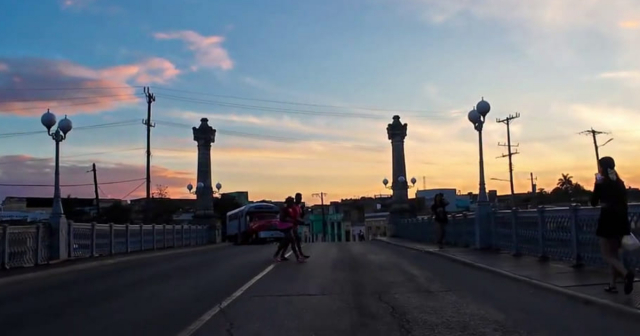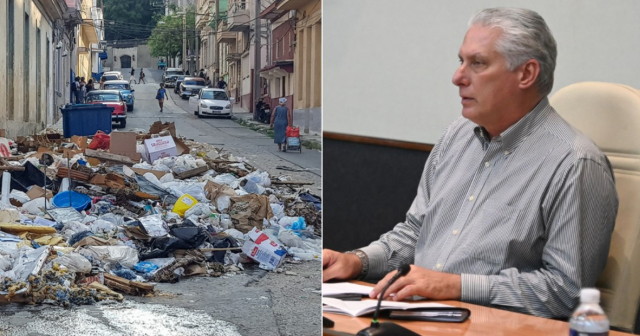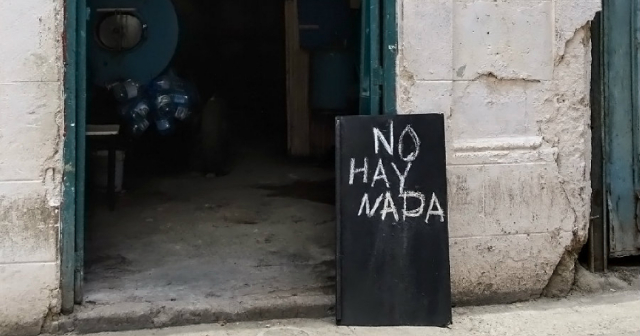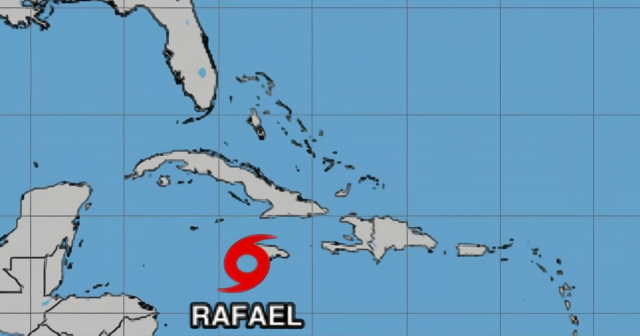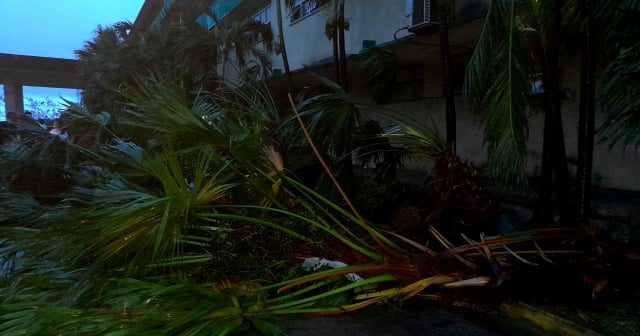Tropical storm Rafael continues to strengthen as it moves through the western Caribbean Sea, approaching the south of Jamaica. The weather phenomenon could make landfall in western Cuba this Wednesday as a Category 2 hurricane.
As of 10:00 a.m. EST today, Rafael's center was located about 105 kilometers southwest of Montego Bay, Jamaica, and 320 kilometers east-southeast of Grand Cayman, according to the latest bulletin from the National Hurricane Center (NHC).
Rafael is expected to become a hurricane in the coming hours, with a trajectory that points directly towards the western part of Cuba.
The storm currently has maximum sustained winds of 95 km/h and is moving northwest at 20 km/h. It is expected to maintain this path, passing near Jamaica today and reaching the Cayman Islands by Tuesday night.
In its latest update, the NHC issued a new tropical storm warning for the Florida Keys.
In another report made on the morning of this Tuesday, meteorologist José Rubiera urged to pay attention to the evolution of Tropical Storm Rafael in the coming hours because, although the center of the weather phenomenon currently does not have a large cloud cover, it will have one when it makes landfall in Cuba.
In a report for his YouTube channel, the popular Cuban meteorologist stated that the storm is rapidly gaining "structure," which could further intensify as Rafael moves into the warm waters of the Caribbean Sea.
Regarding the possible trajectories, Rubiera clarified that they are currently very close together but are becoming more divergent as they approach Cuba, due to an anticyclonic wedge that is steering the forecast to the northwest. However, there could still be changes in trajectory in the coming hours.

Tropical storm Rafael headed towards Jamaica and the Cayman Islands.
At 7:00 a.m. EST, Tropical Storm Rafael was located 130 km south-southwest of Montego Bay, Jamaica, and 370 km southeast of Grand Cayman.
The maximum sustained winds were 95 km/h (60 mph), and it was moving northwest at 20 km/h (13 mph).
The minimum recorded central pressure was 993 mb (29.33 inches).
Alerts and Warnings
A hurricane warning has been issued for the Cayman Islands and several provinces in Cuba: Pinar del Río, Artemisa, La Habana, Mayabeque, Matanzas, and Isla de la Juventud. Additionally, a tropical storm warning is in effect for Jamaica and the Cuban provinces of Villa Clara, Cienfuegos, Sancti Spíritus, and Ciego de Ávila.
Additionally, a tropical storm warning has been issued for the Cuban provinces of Camagüey and Las Tunas, the Florida Keys from Key West to the 5 Mile Bridge, and the Dry Tortugas.
A total of 11 Cuban provinces and the Isle of Youth are under some sort of warning.
The warnings indicate that hurricane winds could reach the affected areas within 36 hours, so residents in those regions are advised to prepare for the arrival of the phenomenon.
Tropical storm conditions may occur in areas under warning, and the possibility of these conditions is expected in areas under alert within the next 48 hours.
Regarding its path and forecast, Rafael is expected to pass near Jamaica in the morning, reach the Cayman Islands by night, and approach western Cuba on Wednesday.
A steady strengthening is expected in the next 24 to 36 hours, becoming a hurricane before reaching Cuba.
The dangers and impacts on land include strong winds, with hurricane conditions reaching the Cayman Islands this afternoon and the west of Cuba, including the Isle of Youth, on Wednesday.
Jamaica will face tropical storm conditions until the afternoon. Intense rainfall is expected, with accumulations of 75-150 mm (3-6 inches) in Jamaica and western Cuba, and peaks of up to 250 mm (10 inches) in mountainous areas, which may lead to flash flooding and landslides.
The storm surge could raise sea levels in the Cayman Islands by 1 to 3 feet and along the southern coast of Cuba by 6 to 9 feet in areas with onshore winds.
Additionally, the waves generated by Rafael will impact the western Caribbean, creating dangerous undertow conditions. There is a possibility of tornadoes on Wednesday in the Florida Keys and the southwestern part of the peninsula.
Residents in the affected areas are advised to follow updates from local weather services and take the necessary precautions.
Current warnings
Hurricane Warning: Cayman Islands and the Cuban provinces of Pinar del Río, Artemisa, La Habana, Mayabeque, Matanzas, and Isla de la Juventud.
Tropical Storm Warning: Jamaica, the Cuban provinces of Villa Clara, Cienfuegos, Sancti Spíritus, and Ciego de Ávila, as well as the Florida Keys from Key West to west of Channel 5 Bridge and Dry Tortugas.
Tropical Storm Watch: Cuban provinces of Camagüey and Las Tunas.
Authorities are urging residents in these areas to quickly prepare for the arrival of severe weather conditions.
Expected effects
Winds:
Hurricane conditions are expected in the Cayman Islands tonight and in western Cuba, including the Isle of Youth, on Wednesday. Tropical storm conditions will be felt in Jamaica until noon, and are anticipated to reach the Florida Keys on Wednesday night.
Rain:
It is expected that Rafael will bring heavy rainfall to the western Caribbean until Thursday, with accumulations of 3 to 6 inches and possible peaks of up to 10 inches in mountainous areas of Jamaica and Cuba, increasing the risk of flooding and landslides.
In the Florida Keys, between 1 and 3 inches of rain are expected.
Storm Tide:
In the south of Cuba, wave action could raise sea levels by 6 to 9 feet in the hurricane alert areas, while the Florida Keys and Dry Tortugas are expected to see increases of up to 3 feet.
Tornadoes and waves:
There is a possibility of isolated tornadoes on Wednesday in the Florida Keys and the southwest coast of Florida. Winds from Rafael will also generate dangerous surf across much of the western Caribbean, with rip currents posing a risk to swimmers.
What do you think?
COMMENTFiled under:

